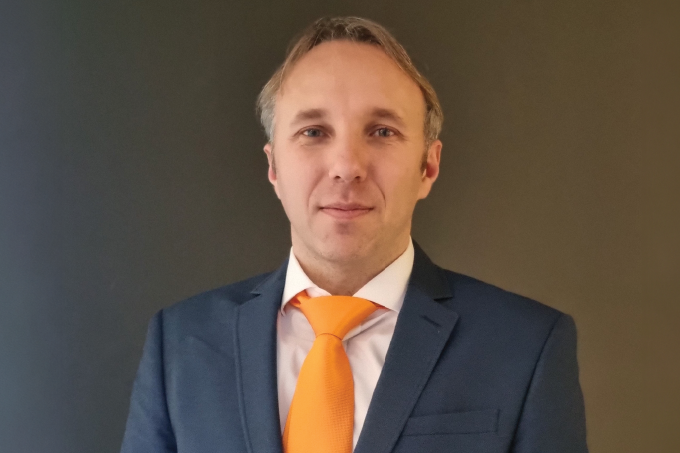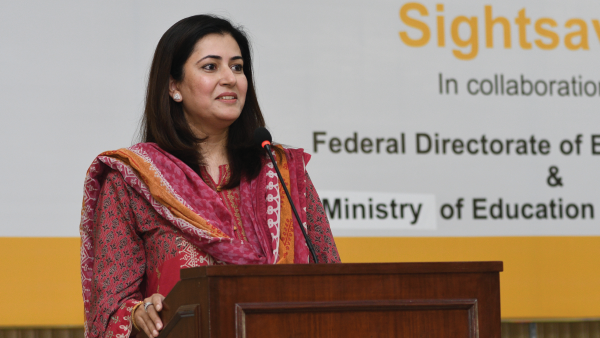You are viewing 2 of your 3 articles before login/registration is required
Glaucoma: Stopping “the Silent Thief”
Glaukos’ Tim Robinson on how to remedy the UK’s failing approach to glaucoma management
Two million people in the UK are currently living with sight loss, with a further 480,000 people diagnosed with glaucoma – and backlogs are significantly impacting the NHS’s ability to treat and diagnose patients quickly and efficiently. With this in mind, Glaukos has produced a report – Forward Vision: Delaying the silent theft of sight – in which industry leaders, healthcare professionals, and political stakeholders discuss how disparities in access to medical technology affect the quality of patient care.
Glaukos UK Market Development Manager, Tim Robinson, sat down with The New Optometrist to discuss the Forward Vision report and explain why he believes the UK needs to bring the latest glaucoma technologies into independent sector treatment centers (ISTCs) and in-house NHS provision.
What’s the gist of the Forward Vision report?
The report is a summary of a Glaucoma Parliamentary Roundtable, hosted by Glaukos in late February, which offered an opportunity for leading practitioners from across ophthalmology and optometry to examine the current standards of care for glaucoma, current NHS backlogs, and where these two things might be improved through innovative technologies. Currently, cutting-edge technologies are only available in NHS trusts; in other words, independent sector treatment centers (ISTCs) don’t have access to them. Though it’s true that the independent sector doesn’t generally treat glaucoma, it does carry out around 50 percent of NHS cataract procedures. One of the main conclusions of the report is that if the independent sector is carrying out cataract procedures for patients who are comorbid with glaucoma, they should also have access to the necessary technologies to perform combined procedures.
How does the current system put glaucoma patients at a disadvantage?
We’ve got several issues with how we manage chronic diseases. We don’t have enough healthcare professionals and we struggle for capacity both in outpatient settings and surgically. Alongside that, cataract surgery is the most common elective procedure we perform in the NHS. One of the main things driving this is the growing elderly population – the number of people in the UK aged 75 or above is predicted to increase from 4.4 million in 2015 to almost 9 million in 2035. According to The Royal College of Ophthalmologists, the number of patients diagnosed with glaucoma will grow by 44 percent over the next 10 years. So, it’s going to become an increasingly difficult challenge.
We know the pandemic exacerbated what was already a difficult situation in terms of resources and resource allocation – there was a 66 percent reduction in the number of patients being referred to secondary care for suspected glaucoma – and that has resulted in a significant number of patients with more advanced disease. There is also the issue that using eye drops to treat glaucoma is largely inefficient and ineffective. This is partly because eye drops rely on patient adherence and patients often struggle to adhere to the medications they’re given. But eye drops in particular are very difficult to administer; it’s not like taking a tablet. So you’ve got forgetfulness, inability to instill the drops, and problems with the drops themselves that cause really poor adherence to glaucoma therapy, especially when multiple medicines are prescribed. That – and the fact that you’ve got to have such high concentrations of the active ingredient to get through the cornea to the target site in the first place – mean that it’s just not a very effective way of managing glaucoma. We’re really not doing enough to prevent patients from progressing to a more advanced stage of glaucoma. And yet, if you draw a graph, with “progression” on one axis and “resources required to treat” on the other axis, you see a direct correlation – the more advanced the patient gets, the more resources you need to treat them.
At Glaukos, we believe there are three things we need to do. The first is to use the expertise of community optometrists to better manage stable glaucoma patients, so that the more advanced patients can be seen by consultant ophthalmologists in hospital. The second is to use advances in technology – things like electronic patient records and imaging – to run asynchronous assessments to effectively triage patients. And the third is to use today’s advanced technologies to treat glaucoma in patients coming in for cataract surgery, preventing them from progressing to an advanced stage of glaucoma.
A survey of The Royal College of Ophthalmologists’ members highlighted negative attitudes towards ISTCs. How can this perception be changed?
We would introduce pilots combining cataract and minimally invasive glaucoma surgery (MIGS) procedures, specifically, iStent inject, in ISTCs. We’d make sure that the correct patients were treated, that procedures were done by experienced surgeons, and that follow-up processes were appropriate. Once we reach a stage where ISTC-treated patients are going back into the NHS for their routine glaucoma follow-up and NHS surgeons can see that these procedures are being done properly and that the patient is benefiting, I think this would improve the image of the ISTCs.
We see this process as follows: When a glaucoma patient has an eye test on the high street and is diagnosed and then referred with a clinically significant cataract, instead of being referred solely for the cataract surgery at the ISTC, the patient would be referred for cataracts plus or minus an iStent. The decision as to whether the patient is suitable for the combined procedure would be made at the pre-cataract assessment. The surgery would then be carried out in the independent sector – as with a cataract – except it would be a combined cataract plus iStent procedure. The patient would then have a post-op follow-up visit and return to their routine glaucoma care in the NHS.
What’s the ideal working scenario for ISTCs and the NHS?
As far as Glaukos is concerned, ISTCs provide an extraordinarily good service for patients. They have helped clear the backlog – and both patients and commissioners are very happy with the service. But for some patients, such as the 10 percent that are comorbid with glaucoma, they’re just not offered the same level of care as hospital trusts. So, as long as the pathway works, as long as it can fit the ISTC business model, and as long as commissioners are happy to pay for it, we see a future where both the NHS and the independent sector work together to share best practice and make sure that every cataract surgery patient with glaucoma has access to the best level of care.
The New Optometrist Newsletter
Permission Statement
By opting-in, you agree to receive email communications from The New Optometrist. You will stay up-to-date with optometry content, news, events and sponsors information.
You can view our privacy policy here
Most Popular
Sign up to The New Optometrist Updates
Permission Statement
By opting-in, you agree to receive email communications from The New Optometrist. You will stay up-to-date with optometry content, news, events and sponsors information.
You can view our privacy policy here
Sign up to The New Optometrist Updates
Permission Statement
By opting-in, you agree to receive email communications from The New Optometrist. You will stay up-to-date with optometry content, news, events and sponsors information.
You can view our privacy policy here







